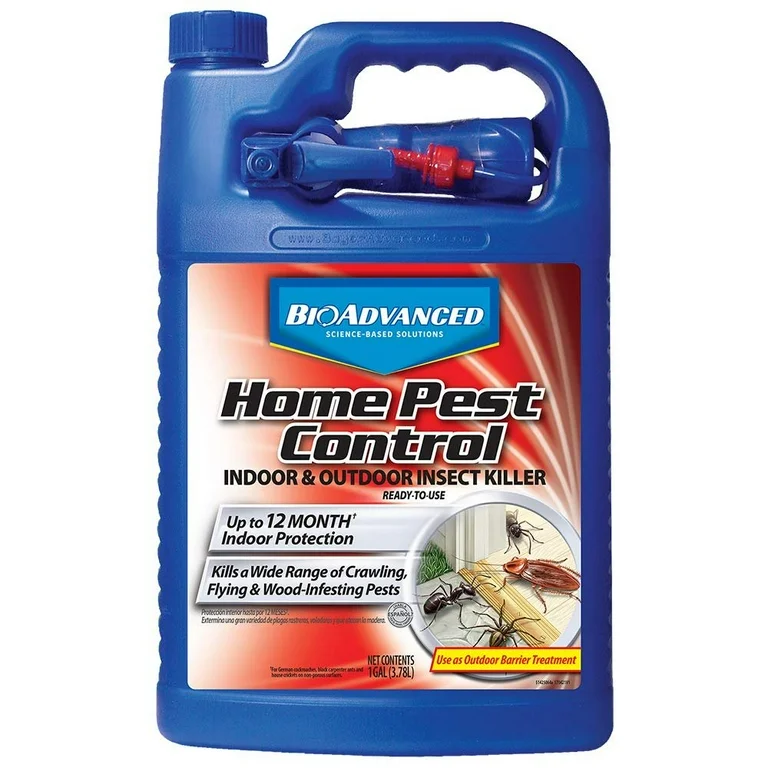Relied On A1 Exterminator Charlotte NC - Comprehensive Pest Solutions
Relied On A1 Exterminator Charlotte NC - Comprehensive Pest Solutions
Blog Article
Bed Bug Therapy Breakdown: Contrasting Chemical Vs. Non-Chemical Solutions
In the world of bug control, specifically when handling the consistent problem of bed bugs, the option in between chemical and non-chemical treatment solutions can be an essential one. Both strategies offer unique advantages and disadvantages, influencing elements such as effectiveness, safety and security factors to consider, and total expense. By checking out the nuanced information of each technique, a clearer understanding of which path to pursue in dealing with a bed insect problem can be acquired.
Effectiveness of Chemical Therapies
Chemical treatments for bed pest problems have actually been extensively recognized for their fast and powerful efficiency in eradicating these pests. When thinking about the performance of chemical treatments, it is important to understand that they can give a fast and complete solution to a bed bug problem. Expert exterminators often rely upon insecticides to target bed bugs at different phases of their life process, including eggs, fairies, and grownups. These chemicals typically function by interfering with the bed insects' nerves, leading to paralysis and ultimate death.
Moreover, chemical treatments have the advantage of supplying residual results, implying that they can continue to get rid of bed pests also after the preliminary application. This residual activity is specifically beneficial in combating any kind of possible re-infestations. In addition, the fast activity of chemical therapies can bring relief to people encountering extreme bed insect problems, enabling them to regain control of their home rapidly.
Security Interest In Chemical Solutions
One important aspect that calls for careful consideration when utilizing chemical solutions for bed pest therapy is ensuring the safety of passengers and the atmosphere. Direct exposure to certain chemicals made use of in bed insect treatments can lead to respiratory issues, skin irritability, or other negative reactions, especially in people with pre-existing conditions or sensitivities.
Furthermore, the environmental influence of chemical services is an additional substantial consideration. Some pesticides made use of in bed insect treatments may be unsafe to useful bugs, wildlife, and ecological communities if they leach right into the dirt or water systems. It is important to make use of chemical therapies judiciously, complying with safety standards, and considering less toxic alternatives to reduce these dangers and guarantee the reliable and risk-free administration of bed bug invasions.
Advantages of Non-Chemical Strategies
Considering the potential safety and security worries and environmental effect linked with chemical remedies for bed pest treatment, checking out non-chemical techniques offers a promising choice with numerous unique benefits. Non-chemical therapies are eco pleasant, as they do not contribute to air or water contamination, making them a lasting choice for insect control.
Additionally, non-chemical services can be effective in targeting bed insects, including hard-to-reach locations where chemical treatments may not pass through - A1 pest control services charlotte. Approaches such as heat treatment, vacuuming, vapor cleansing, and mattress coverings give comprehensive obliteration without the usage of unsafe chemicals.
Limitations of Non-Chemical Treatments

Furthermore, non-chemical treatments often call for multiple applications to attain effective eradication. This can be time-consuming and might not constantly ensure total removal of all bed insects and their eggs, particularly in hard-to-reach or covert places.
In addition, the success of non-chemical therapies heavily depends on proper application and thoroughness, which can be testing for individuals without specialist know-how. Poor application of non-chemical techniques may result in insufficient obliteration, bring about persistent problems and the need for extra therapies.
Therefore, while non-chemical therapies have their benefits, it is necessary to acknowledge these constraints and consider them when establishing one of the most effective approach for taking care of bed insect invasions.
Price Contrast: Chemical Vs. Non-Chemical Options
Given the restrictions linked with non-chemical treatments, a vital facet to review in the context of bed insect monitoring is the cost contrast in between reference chemical and non-chemical alternatives. In contrast, non-chemical therapies like warmth treatment or vapor can be extra costly, with expenses ranging from $1,000 to $6,000 for an entire home. While the first price of chemical therapies may appear reduced, several therapies might be required to totally eradicate the invasion, possibly boosting the total cost.
Conclusion

Considering the prospective security worries and environmental effect associated with chemical solutions for bed pest therapy, discovering non-chemical methods offers an encouraging choice with several unique advantages.Provided the constraints associated with non-chemical treatments, an essential element to assess in the context of bed insect monitoring is bee exterminator the price comparison between chemical and non-chemical choices. In contrast, non-chemical treatments like warmth treatment or heavy steam can be more expensive, with costs ranging from $1,000 to $6,000 for an entire home. While the first cost of chemical treatments may seem reduced, multiple therapies might be called for to totally get rid of the problem, possibly boosting the total cost.In conclusion, when contrasting Get the facts chemical and non-chemical bed pest treatment alternatives, it is vital to take into consideration performance, safety, advantages, limitations, and cost.
Report this page